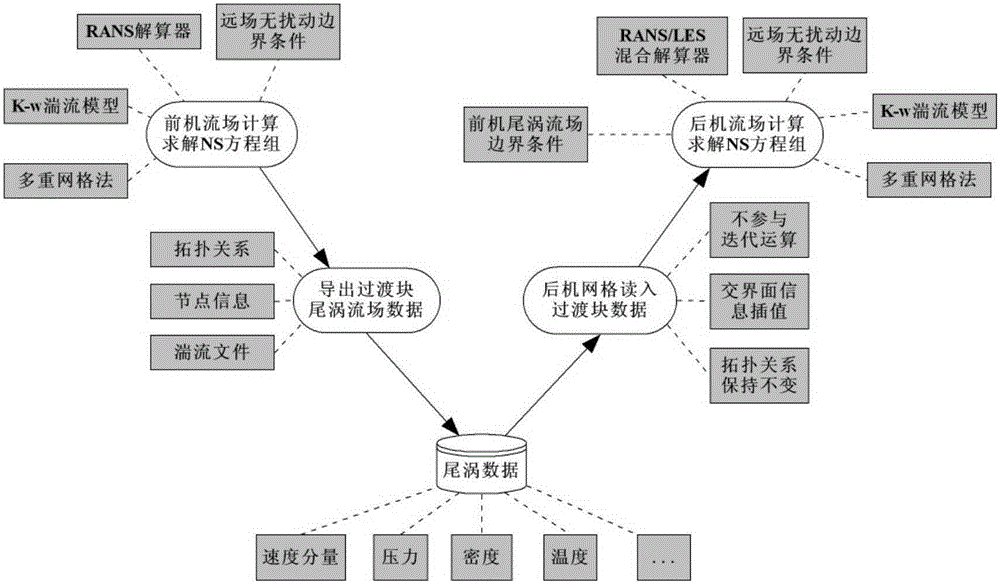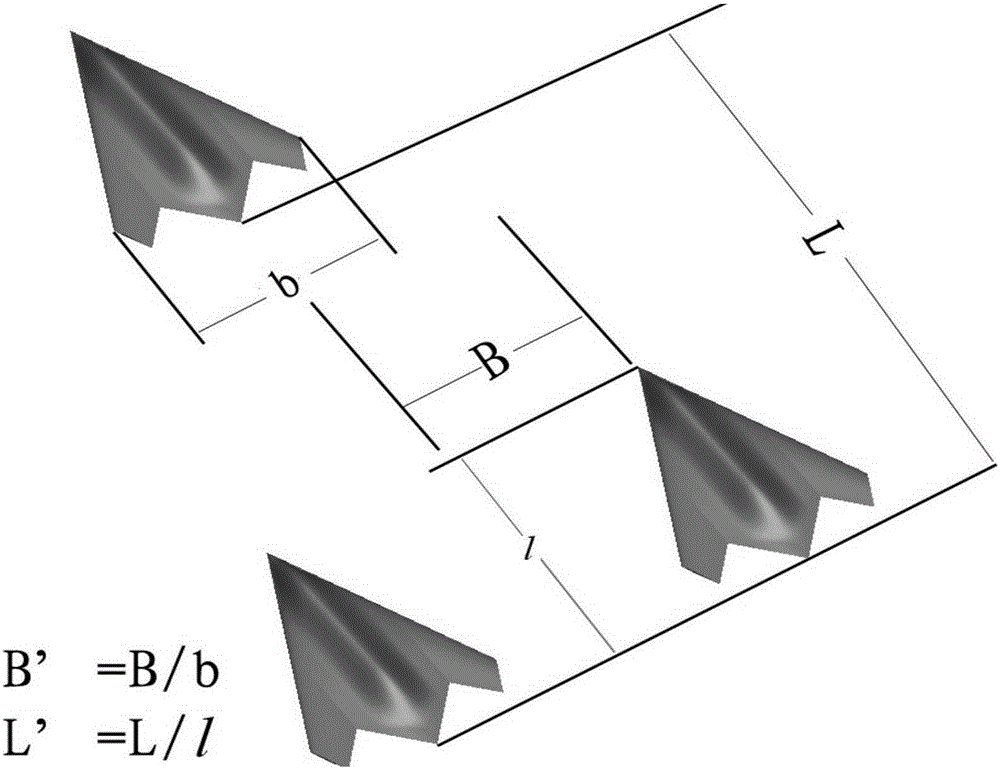Trailing vortex field transfer based numerical simulation method for multi-aircraft flight formation
A numerical simulation, wake eddy current technology, applied in the fields of instrumentation, electrical digital data processing, special data processing applications, etc., can solve problems such as large amount of computing grids
- Summary
- Abstract
- Description
- Claims
- Application Information
AI Technical Summary
Problems solved by technology
Method used
Image
Examples
Embodiment Construction
[0023] A multi-aircraft flight formation numerical simulation method based on wake vortex flow field transfer, such as figure 1 shown, including the following steps:
[0024] The first step is to generate the calculation grids of the front plane and the rear plane respectively according to the mathematical model of the surface shape of the aircraft model:
[0025] The grid requires a body-fitting, orthogonal structural grid, and generates a boundary layer grid on the surface of the aircraft. In order to facilitate the calculation grid of the rear aircraft to add the data of the wake vortex flow field of the front aircraft, the calculation grids of the front aircraft and the rear aircraft both contain transition block grids with the same topology, that is, artificially divided, topological relations and The grid area with completely consistent node distribution is a part of the spatial grid, which is used for exporting the data of the tail vortex field of the front aircraft an...
PUM
 Login to View More
Login to View More Abstract
Description
Claims
Application Information
 Login to View More
Login to View More - R&D
- Intellectual Property
- Life Sciences
- Materials
- Tech Scout
- Unparalleled Data Quality
- Higher Quality Content
- 60% Fewer Hallucinations
Browse by: Latest US Patents, China's latest patents, Technical Efficacy Thesaurus, Application Domain, Technology Topic, Popular Technical Reports.
© 2025 PatSnap. All rights reserved.Legal|Privacy policy|Modern Slavery Act Transparency Statement|Sitemap|About US| Contact US: help@patsnap.com



